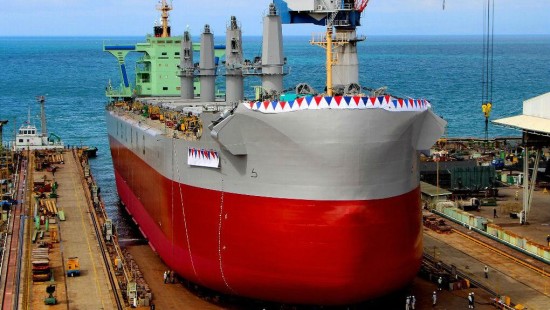Shipyards become the next victim of the deteriorating conditions in the dry bulk, container and offshore markets as 2016 looks to set the record for the lowest newbuilding contracts in more than 20 years, according to BIMCO.
After a decline from 2010 to 2012, shipbuilding had a rebound in 2013 and was expected to level out over the next few years. The reality was a slight decline in 2014 and 2015, but still high levels of contracting measured by compensated gross tonnage (CGT).
BIMCO said that since then, shipyards have crashed, as the contracted CGT globally has reached its lowest level since on record.
“Since the high contracting in 2013, BIMCO expected the shipyards could come under pressure. This expectation became a reality at the start of 2016, with Q1 contracting the second lowest CGT in 20 years,” Peter Sand Chief Shipping Analyst at BIMCO, said.
“A low level of contracting is exactly what the shipping industry needs in order to eventually restore the fundamental balance between supply and demand,” he added.
The shipyards in Europe were the only ones to see an increase in contracting in the first eight months of 2016 compared to the same period in 2015. Europe contracted 2.52 million CGT, an increase of 45.3% compared to the previous year.
Japan and South Korea have had the biggest decline in contracting, down by 86.7% and 86.5% respectively, compared to the same months the year before, while China contracted 49% less CGT in that period.
“Globally, the tanker and container segments are the main reasons for diminishing new orders by percentage as well as in CGT in 2016. Combined, they were responsible for 67.7% of the total contracted CGT in the first 8 months of 2015. This year, tanker contracts are down by 80.1% and container contracts are down 84.1% compared to the same eight months last year,” according to BIMCO.
The effect of declining contracts and continuing shipyard overcapacity has put pressure on the shipyards order cover. The order cover is the number of years it will take to deliver the scheduled order book, based on the capacity of the shipyards. Therefore, a low order cover can be a result of high capacity at the shipyards, as well as a decreasing order book.
Shipbuilding in South Korea is suffering the most, as they hold orders for less than two years of building. Europe continues the positive trend seen in contracted CGT, with increasing order cover. This shows that additional contracting orders are not being absorbed by new shipyards entering the market.
“There is a declining trend for Japan, China and South Korea and with such low levels of newbuilding contracts being placed, this will look even more severe next year. However, the order cover could have been even lower, if capacity had been taken out due to shipyards cutting down on operations or closing entirely,” Peter Sand said.
Copyright Ships & Ports Ltd. Permission to use quotations from this article is granted subject to appropriate credit given to www.shipsandports.com.ng as the source.

